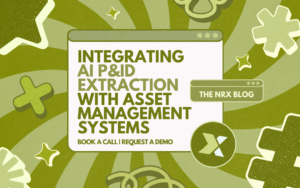Reports have found that data issues impact 60% of AI implementation efforts in asset-heavy industries, and this shows how data quality remains one of the biggest barriers to success. The value of industrial AI lies not just in algorithms but in the data those algorithms consume. Among the most critical factors influencing data quality is the asset hierarchy, which provides the structure AI systems need to interpret and model the physical world accurately.

The Role of Hierarchy in Machine Learning
Machine learning needs context to deliver reliable results. When models learn patterns, they rely on location, configuration, and operational linkages. For example, if a model analyzes power surges in a compressor, it must know its upstream and downstream systems. That information is found in the hierarchy. Without hierarchy, AI systems treat all assets equally with no regard for relationships or significance. This reduces accuracy and increases false positives.
What Asset Hierarchy Means in Industrial Operations
In industrial terms, an asset hierarchy reflects a tree structure, where the top level might be a plant or site. This branches down into systems, subsystems, components, and parts. ISO 55000 highlights it as a systematic framework for asset data management to support performance and risk management.

Foundations Matter: Hierarchy Enables AI Use Cases
Predictive Maintenance
In predictive maintenance, sensors track metrics such as pressure, temperature, or vibration. Without a structured hierarchy, these signals cannot be tied to specific failure modes. For instance, AI might detect a temperature spike. However, only with proper asset context can it determine if that spike is meaningful or benign. Structured data enables the model to reference historical patterns accurately.
Reliability-Centered Maintenance (RCM)
In RCM programs, failures are analyzed to prevent recurrence. A structured hierarchy improves fault tree analysis and AI-assisted root cause identification.
Clarity, Accountability, and Human Decision-Making
AI-generated insights are valuable only when they can be clearly understood and acted upon by human teams. A well-structured asset hierarchy improves the readability of dashboards and provides accurate visualization of asset performance. When alerts are directly linked to specific and precise asset locations, operations teams can respond more quickly and with greater confidence.
Beyond operational clarity, structured asset data also supports critical areas such as data governance and AI accountability. Industrial AI systems must be able to explain their decisions, especially in regulated environments. Without a formal asset hierarchy, it becomes difficult to trace how models reach conclusions, which undermines auditability. As regulatory expectations increase, the ability to demonstrate a clear and traceable data lineage becomes essential for both compliance and trust in AI-driven operations.
Conclusion
As AI expands into more use cases such as energy optimization, workforce safety, and emissions tracking, the demand for structured asset data becomes even more critical. Companies that approach their asset hierarchy as strategic infrastructure gain a significant advantage by accelerating AI deployment and building greater trust in automated systems. Digital transformation leaders already recognize that a well-designed hierarchy is not a static chart but a dynamic foundation for digital insight. From industrial AI to predictive maintenance, it acts as the invisible thread that links data to meaningful action. Investing in structure is not simply a best practice; it is a prerequisite for achieving sustained success in modern industrial operations.
Integrating AI P&ID Extraction with Asset Management Systems
ISO 14224 vs Other Maintenance Standards: What Sets It Apart?
Building Trust in Your Asset Data: Strategies for Governance
Share this article




